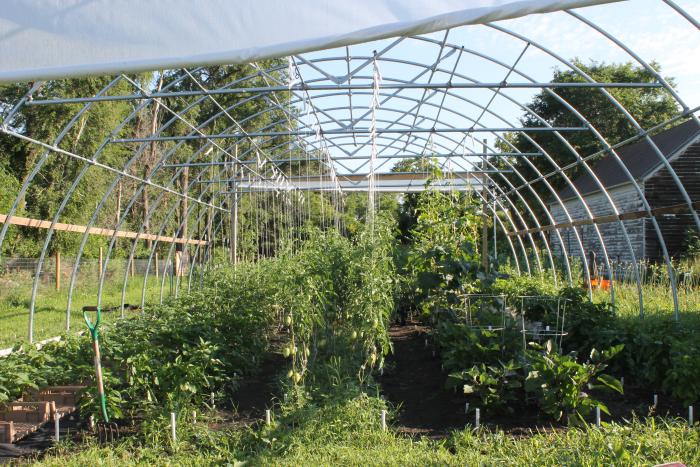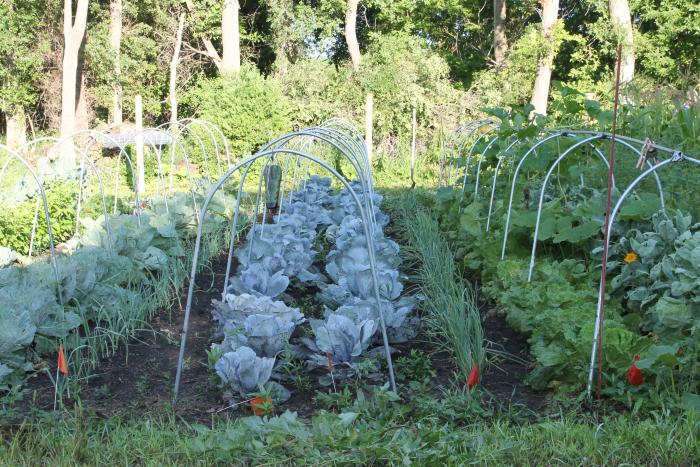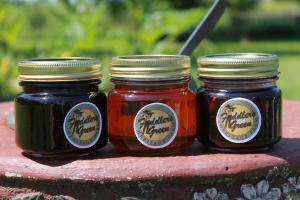Unique Small Farm Finds Local Niche in Griggs County
When Ron and Annette Johnson purchased their North Dakota farm 10 years before both retired from military service, they envisioned developing a hobby farm for themselves and their family.
Loretta Sorensen writes from Yankton, S.D.
However, after offering produce to their community to establish local connections, they recognized the value people placed on their products. The experience had a significant impact on their vision for the farm, leading to development of Fiddler’s Green Heritage Farm at Binford, N.D.

“We had gardened for about two years before sharing produce with local residents,” Ron says. “When we saw how people relied on those products, we decided to see how far we could go with raising produce for local families. We are now in our fourth season of selling produce locally.”
The Johnsons point out that they are still “on a steep learning curve” when it comes to reaching their production goals. They tend to grow heirloom varieties and haven’t shied away from trying new things, even if they didn’t always work out. Their local Natural Resource Conservation Service (NRCS) office has helped them identify options for improving facilities that are key to helping them achieve production goals.
“We started working with NRCS after they saw our home-made greenhouse,” Ron says. “They visited us and inquired about our interest in a high tunnel.”
Once the Johnsons learned they would receive financial assistance from NRCS for a high tunnel, they built it and began thinking about a processing facility. That building, currently under construction, will provide both the room and tools necessary to work with a high volume of garden produce, which was proving to be too much for their family kitchen.
“In 2019 we expect to set up a second high tunnel to help extend our growing season for things like peppers and tomatoes, which do better in a more controlled environment,” Ron says. “We’re also developing plans for a sheep herd, working with NRCS on fencing and a grazing rotation plan for our pastures.”
NRCS has also worked with the Johnsons to renovate their shelterbelt, which will help protect livestock during winter months.

“We met Ron when he stopped in our office to inquire about some general ag practices,” Andrew Jewett, North Dakota’s Griggs County NRCS District Conservationist, says. “When we saw what they were doing on their farm, we visited with them about some cost-share opportunities.”
The Johnsons are using some Environmental Quality Incentive Programs (EQIP) and working on additional cost-share opportunities, such as a solar-powered well pump they’ll use to bring water to livestock once they’ve developed that aspect of their farm.
“The Johnsons are working on a smaller scale than many farmers, but their idea of developing diverse income streams is becoming more common, as people look for ways to generate income on the farm rather than taking an off-farm job,” Jewett says. “The Johnsons are working to fill the niche they found in our community for the types of products they are growing on their farm.”
One of the more unusual products the Johnsons offer is maple syrup. A military stint in Maine gave them hands on experience with tapping trees for sap and producing the sticky sweet.
“In Maine, they have maple trees,” Ron says. “We have Boxelder trees. After doing some research, we learned you can make syrup from Boxelders, so we started tapping trees and setting up the tools to boil the sap down into syrup.”
After collecting tree sap, it takes a large stove to boil off the water and collect the syrup that’s left. The Johnsons use a two-burner wood stove set up in their yard.
“We weren’t certain the Boxelders would work, but it made some good syrup, with kind of a butterscotch flavor,” Ron says.
The Johnsons started making syrup using a two-burner cook stove, then Ron constructed a boiler to accommodate higher production. He used parts of and old fuel oil tank and set the stove up so there was plenty of room to supply the wood used to cook down 42 gallons of sap.

“We finished the process in our kitchen and did a lot of filtering to get the final product,” Johnson says.
As a rule, trees used for sap should be at least 8 inches wide. Some of the Boxelders in the Johnson’s shelterbelt are up to three feet wide. Weather plays a large role in sap production, which means syrup production will vary from year to year.
“You need optimum temperatures in the daytime and at night to make the sap run,” Ron says.
Even though they’ve come a long way in the last three years, their vision for their farm is still unfolding.
“I retired from the Navy and Annette retired from the Marines,” Ron says. “We spent time in places all around the world and learned about different foods in those places, like edible soybeans and garbanzo beans. We’re developing organic produce and some niche products, like dry beans. They’re not your run-of-the-mill beans, and they’ve been very popular here.
“My wife, who is Hispanic, is also growing things like tomatillos and poblano peppers,” Ron says. “We’re not trying to compete with big produce farms who’ve been in business for 60 years. We’re looking for ways to be self-sufficient and provide people with products that aren’t otherwise readily available.”

